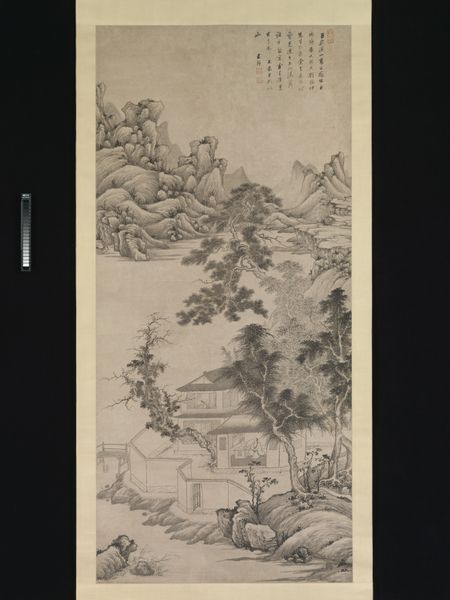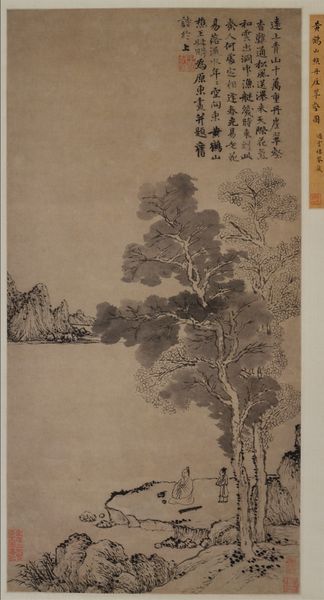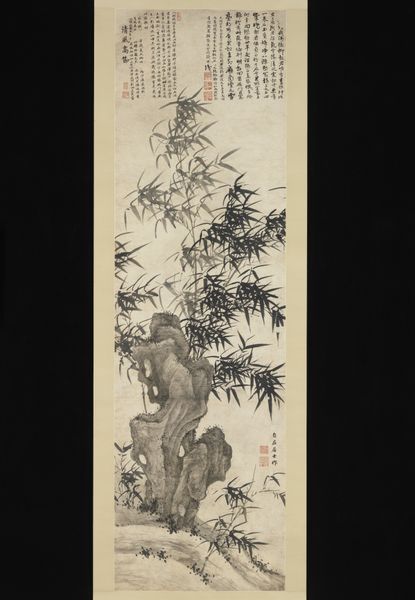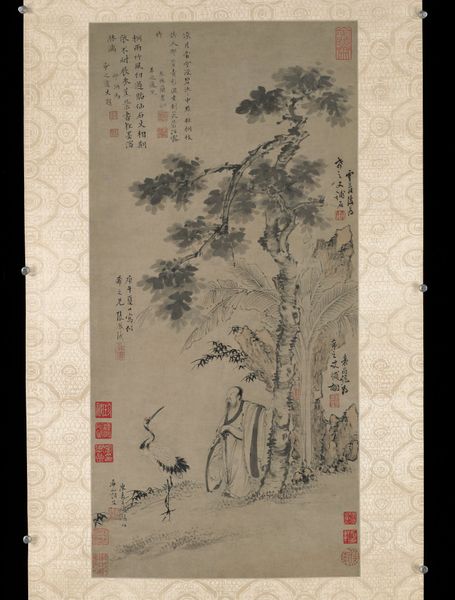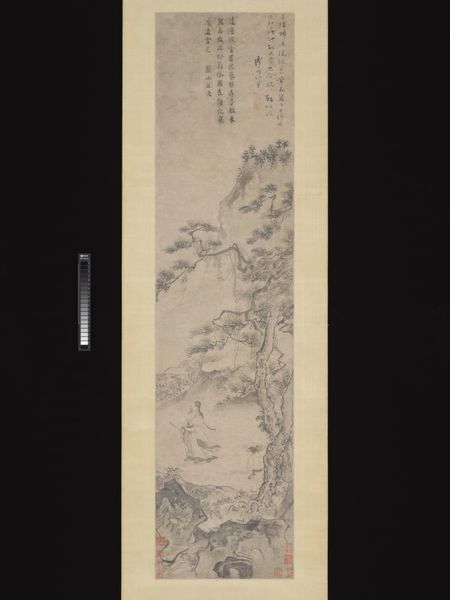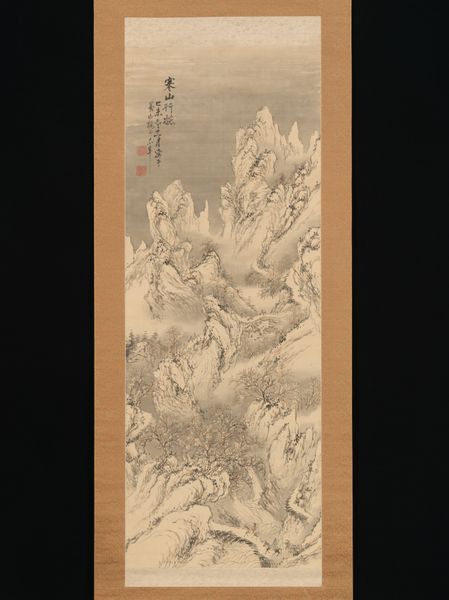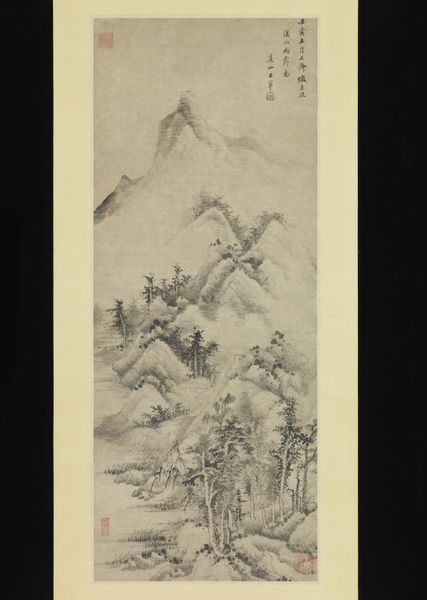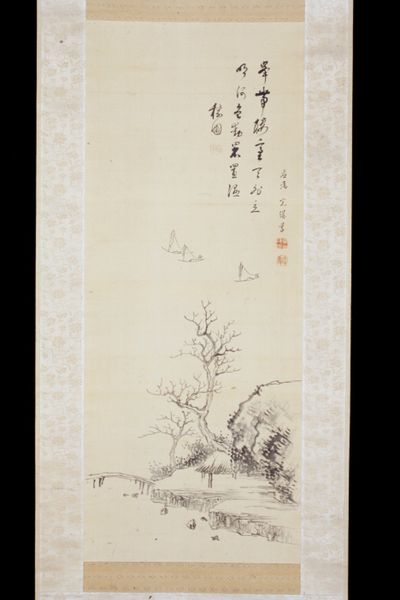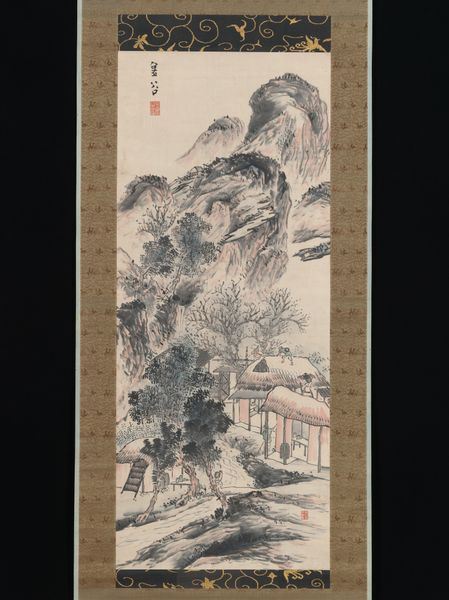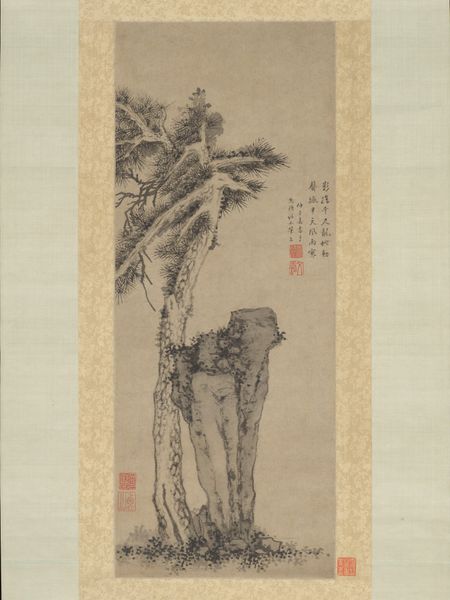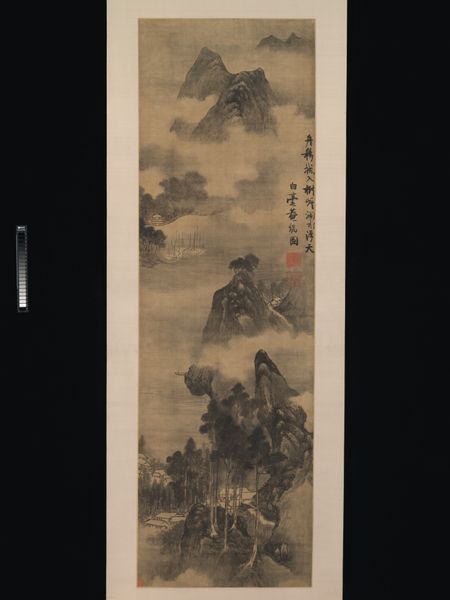
drawing, paper, ink
#
pen and ink
#
tree
#
drawing
#
asian-art
#
landscape
#
figuration
#
paper
#
ink
#
men
#
line
Dimensions: Image: 60 x 24 3/4 in. (152.4 x 62.9 cm) Overall with mounting: 107 x 32 1/8 in. (271.8 x 81.6 cm) Overall with knobs: 107 x 35 1/4 in. (271.8 x 89.5 cm)
Copyright: Public Domain
Curator: Here we have Shen Zhou's "Silent Fisherman in an Autumn Wood," a captivating ink drawing on paper from 1475. It’s currently housed at the Metropolitan Museum of Art. Editor: The immediate feeling is one of wistful tranquility, a very contained kind of stillness. It's like a whispered secret among the bare branches. Curator: Shen Zhou was a leading figure in the Wu School of painting, known for its literati style that emphasized personal expression and cultivated amateurism, setting him apart from court-sponsored art. The theme, too, echoes the ideals of retreating from public life in favor of natural simplicity. Editor: I see it. The composition itself is really interesting. The bare trees, so prominent, almost seem to guard the scene, like gatekeepers to this quiet moment of reflection with the fisherman. Curator: The use of monochrome ink is characteristic, isn't it? It invites the viewer into a contemplative space, using variations in tone and line to suggest depth and texture. And, of course, there's the added textual information typical of literati painting; you'll see inscription and seals that add layers of meaning, connecting it to the artist's intellectual and social world. Editor: That lone figure, fishing or just pondering amidst the muted tones—I can practically feel the crisp air and hear the rustle of leaves. I almost want to be there with him, escaping the noise of modern life. Does that make me a typical romantic? Curator: Perhaps, but such escapism to nature was deeply embedded in the cultural milieu that nurtured this work. Think of the complex pressures of official life, social hierarchies, the search for harmony and order during the Ming dynasty, of which Shen Zhou was a part. It becomes less simple escapism and more active social commentary. Editor: Maybe that's the quiet subversion humming beneath the surface. This isn’t just about finding a nice fishing spot, but about staking a claim to a different way of being. And using nature as your fortress against whatever might ail you. Curator: Precisely! He provides an important glimpse into the scholar-official’s relationship with the natural world, particularly through the lens of art's public function in conveying social and philosophical values. Editor: What I appreciate most is the raw honesty; it doesn’t shy away from portraying life as both solitary and beautiful. Makes me appreciate the power of a minimalist aesthetic to say so much. Curator: Absolutely. It encapsulates the artist's ideals and the socio-cultural forces at play, proving just how intertwined they could be. Editor: I leave here inspired by art that so effortlessly weaves quietude with a sense of rebellious calm. A balance I suspect we could all use a bit more of today.
Comments
No comments
Be the first to comment and join the conversation on the ultimate creative platform.
